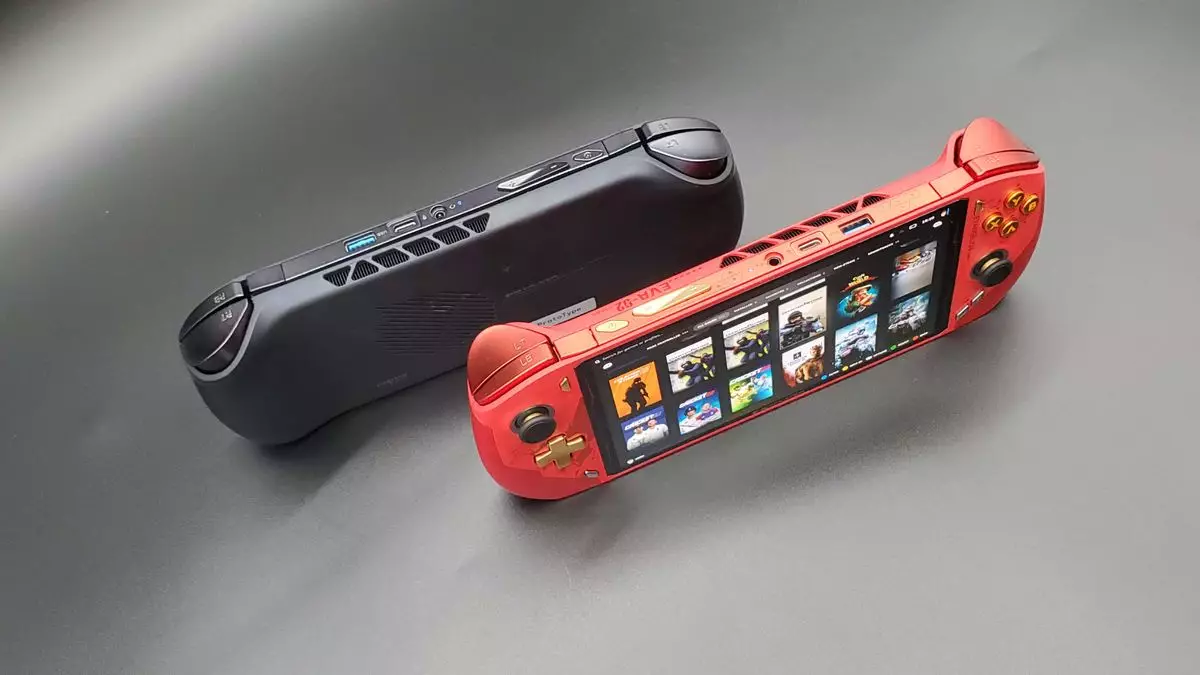AMD is standing at the precipice of innovation with the upcoming release of its Ryzen AI Z2 Extreme, which is set to redefine handheld gaming. Embracing the integration of an AI-accelerating Neural Processing Unit (NPU), this latest APU iteration seeks to enhance the gaming experience, allowing manufacturers to label their devices as “AI-capable.” While this development is fueled by the excitement of technological advancements, it also invites scrutiny regarding its practical application and potential consequences for the handheld gaming ecosystem.
A Closer Look at the Z2 Architecture
The AMD ‘Z’ series has always been geared towards handheld gaming devices, with the Ryzen AI Z2 Extreme being the second generation of these specialized APUs. Initially, this might appear as a straightforward advancement from its predecessor; however, delving deeper reveals a labyrinthine structure of varying chip architectures. The Z2 Extreme makes use of AMD’s latest Strix Point design, boasting 16 RDNA 3.5 graphics cores alongside eight Zen 5 CPU cores—comprised of a mix of three full Zen cores and five compact Zen 5c cores. What seemed like a simple upgrade introduces a host of complications.
In an environment already laden with different generations of APUs, the Z2 series consists of models that diverge significantly from one another. For instance, the Z2 Go leverages the older Rembrandt APU architecture featuring Zen 3 cores and RDNA 2 graphics, while the baseline Z2 employs the Hawk Point APU with its last-gen specs. This patchwork of architectures across three distinct variants poses challenges for consumers and enthusiasts alike, potentially leading to confusion regarding their performance capabilities and appropriate applications in handheld systems.
The Role of the NPU: A Double-Edged Sword?
As we dissect the components of the Ryzen AI Z2 Extreme, the question looms large: what exactly is the value of activating the NPU for gamers? On one hand, enabling this feature could amplify the device’s marketing appeal, thrusting handhelds into the spotlight as carriers of artificial intelligence functionality, including support for cutting-edge tools like Microsoft’s Copilot+ AI assistant. However, this allure requires critical evaluation.
While the NPU ships with the chip, its practical uses within current gaming landscapes remain nebulous. Popular AI applications, like ChatGPT or similar services, flourish predominantly in cloud-based environments rather than on-device functions. The effectiveness of local NPUs in enhancing the gaming experience, particularly with traditional PC titles, is still a matter of debate. Moreover, as gaming grows more sophisticated, the unexpected energy drain from powering the NPU raises legitimate concerns regarding fan favorite attributes such as all-day battery life.
The Battery Life Conundrum
Handheld gaming devices have always grappled with the balance between performance and battery longevity. High-specification handhelds, even when optimized, often struggle to provide substantive battery life, and the introduction of a fully functional NPU could exacerbate these challenges. As gamers, we desire the nirvana of robust performance without sacrificing time unplugged. Lighting up CPU cores, graphics, and now an NPU could intuitively lead to power drain that might alienate users who value endurance during long gaming sessions.
While notable advancements in hardware, such as the Ryzen AI Z2 Extreme, can create awe-inspiring benchmarks, the overarching question remains: will this power equate to meaningful enhancements in user experience, or will it merely serve as a marketing ploy to capitalize on the AI trend? The potential integration of an NPU is exciting, but the tangible benefits to gamers must be demonstrated rather than assumed.
The Path Forward for AMD and Handheld Gaming
AMD must navigate its way through a complex landscape filled with varied architectures and burgeoning AI capabilities. Users are looking for clear insights into how the Ryzen AI Z2 Extreme will fundamentally enhance the handheld gaming experience. As technology continues to progress at an astonishing rate, clarity surrounding these innovations is essential for both the industry and its consumers.
Will the Ryzen AI Z2 Extreme surge forth as a game-changer or falter under its own expectations? As AMD carves its path forward in the competitive landscape of handheld gaming, the industry watches diligently, contemplating the implications of integrating artificial intelligence into our favorite pastime. The decisions made now will echo in the gaming community for years to come.

